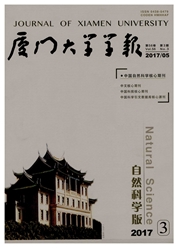

 中文摘要:
中文摘要:
应用环六亚甲基双乙酰胺处理人成骨肉瘤MG-63细胞,观察MG-63细胞处理前后形态与超微结构及其相关终末分化指标的表达变化.实验结果显示,经5 mmol/L HMBA处理后,MG-63细胞体积增大,趋于扁平铺展状态,细胞大小较为一致,排列较为规则,细胞核形态规则,核质比例减小,核仁减少,核内异染色质减少,常染色质增多,细胞核内的线粒体和高尔基体较为发达,内质网数量增多,细胞表面的微绒毛减少,在成熟细胞中可见钙化糖原颗粒,细胞表面出现钙化小泡沉积,并且形成典型的骨结节.常规细胞化学和免疫细胞化学检测显示,HMBA处理后的细胞中Ⅰ型胶原纤维、骨钙素、骨粘素的表达显著增加,实验结果表明HMBA能够有效诱导人成骨肉瘤细胞的分化,并促进其终末分化指标的表达.
 英文摘要:
英文摘要:
In this study,we choose human osteosarcoma MG-63 cell as cell model treated by 5 mmol/L HMBA to detect the differentiation of human osteosarcoma MG-63 cells and investigate the expression of their terminal differentiation markers. The aim is to establish the terminal differentiation model of human osteosarcoma cells. Experiment result showed that MG-63 cell treated by 5 mmol/L HMBA had undergone the morphological and ultrastructural reversion towards the normal cells. The followings are the observed results:the morphology of the cell were regular and inclined to the same volume. The cells tend to be flat and spread,then the size increased,the nucleo-cytoplasma ratio lessened, and the result show that microvilli were rare and spicule-like crystals appeared on the celluar surface. The expression level of phenotype markers of osteoblast such as collagen,osteocalcin, osteonectin were upregulated compared with the control group. The number of bone nodule increased,its structure and morphology tend to be typical. In conclusion,the results of this study showed that the HMBA could reverse the malignant phenotype characters, upregulate expression of the osteoblat-like phenotype markers including collagen,osteocalcin,osteonectin, facilitate the formation of bone nodule, and induced terminal differentiation of human osteosarcoma MG-63 cell.
 同期刊论文项目
同期刊论文项目
 同项目期刊论文
同项目期刊论文
 期刊信息
期刊信息
